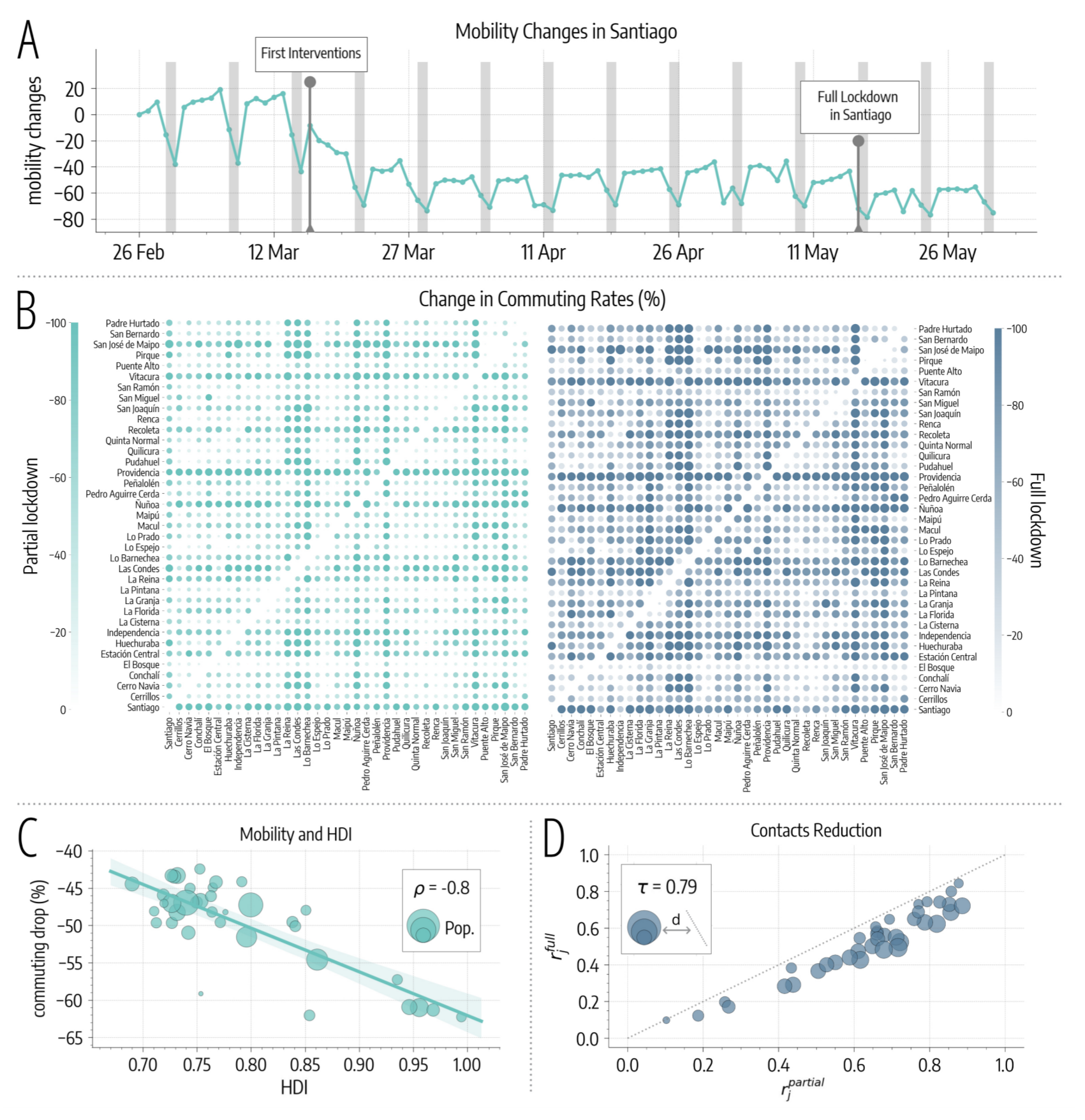Estimating the effect of social inequalities in the mitigation of COVID-19 across communities in Santiago de Chile
Gozzi, N., Tizzoni, M., Chinazzi, M., Ferres, L., Vespignani, A., & Perra, N. (2020). Nature communications, 12(1), 1-9. https://www.nature.com/articles/s41467-021-22601-6

Abstract
We study the spatio-temporal spread of SARS-CoV-2 in Santiago de Chile using anonymized mobile phone data from 1.4 million users, 22% of the whole population in the area, characterizing the effects of non-pharmaceutical interventions (NPIs) on the epidemic dynamics. We integrate these data into a mechanistic epidemic model calibrated on surveillance data. As of August 1st 2020, we estimate a detection rate of 102 cases per 1,000 infections (90% CI: [95 - 112 per 1,000]). We show that the introduction of a full lockdown on May 15th, 2020, while causing a modest additional decrease in mobility and contacts with respect to previous NPIs, was decisive in bringing the epidemic under control, highlighting the importance of a timely governmental response to COVID-19 outbreaks. We find that the impact of NPIs on individuals’ mobility correlates with the Human Development Index of comunas in the city. Indeed, more developed and wealthier areas became more isolated after government interventions and experienced a significantly lower burden of the pandemic. The hetero-geneity of COVID-19 impact raises important issues in the implementation of NPIs and highlights the challenges that communities affected by systemic health and social inequalities face adapting their behaviors during an epidemic.
Recommended citation: Gozzi, N., Tizzoni, M., Chinazzi, M., Ferres, L., Vespignani, A., & Perra, N. (2021). "Estimating the effect of social inequalities in the mitigation of COVID-19 across communities in Santiago de Chile". Nature communications, 12(1), 1-9. https://doi.org/10.1038/s41467-021-22601-6
